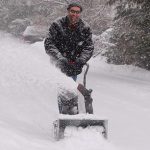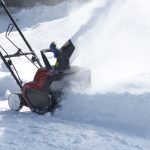Snow has been a huge part of the weather across the country this winter, and has certainly made life difficult for many folks, inconveniencing us and making it difficult to get around. It’s also been pretty difficult on the trees and landscaping, but in the long run, it may actually be good for your lawn. Here’s how heavy snowfall throughout the winter can help your lawn:
Reduce Insect Infestations
The heavy snowfall has sat around for a while, and has been accompanied by severely low temperatures. These low temperatures have likely reduced the insect population, and you should have less of an issue with insects in the lawn and garden this coming year.
Snow Cover is Insulation
Remember those severely low temperatures? In the case of heavy snow covering on the ground, it actually acts as an insulator, protecting your grass and plants from the biting low temperatures and the subzero wind chills. This insulation will allow for roots to continue growing and earthworms to work through the soil. It also means that soil microbes will continue to work and improve the quality of your turf.
Snow Cover as a Watering Method
As long as the temperature remains generally around freeing, a heavy cover of snow can act as a slow-release watering method. The snow will melt slowly, releasing water into the ground. This can be particularly helpful, particularly with evergreen trees and hardy winter flowers, such as rhododendrons.
Snow Cover can Help Fertilize
Nitrogen can be found in the atmosphere, and the snow helps to collect it and deliver it into the soil. Nitrogen is also one of the prime elements in fertilizer, and is an essential nutrient for the health of your grass and soil. The heavier the snow is, the more likely it is to be nitrogen-rich, meaning it will be better for your lawn. It is estimated that snow can deposit, on average, 5 pounds of nitrogen across an acre of land. This is not a drastic amount, but it can be enough to be slightly beneficial.
Snow Cover as a Seeding Method
This may sound a little quirky, but it can be effective. If a thaw is in the near future, scatter grass seed over the top of the snow layer evenly. When the thaw occurs, the snow will melt and pull the grass seed down into the soil with it, combining seeding and watering in one easy step.
So as we continue to see some nasty storm for the next few weeks, just remember that the terrible weather may mean less time and money you need to spend on your lawn in the warmer months.





